
How to Use STM32F103 Blue Pill: Examples, Pinouts, and Specs
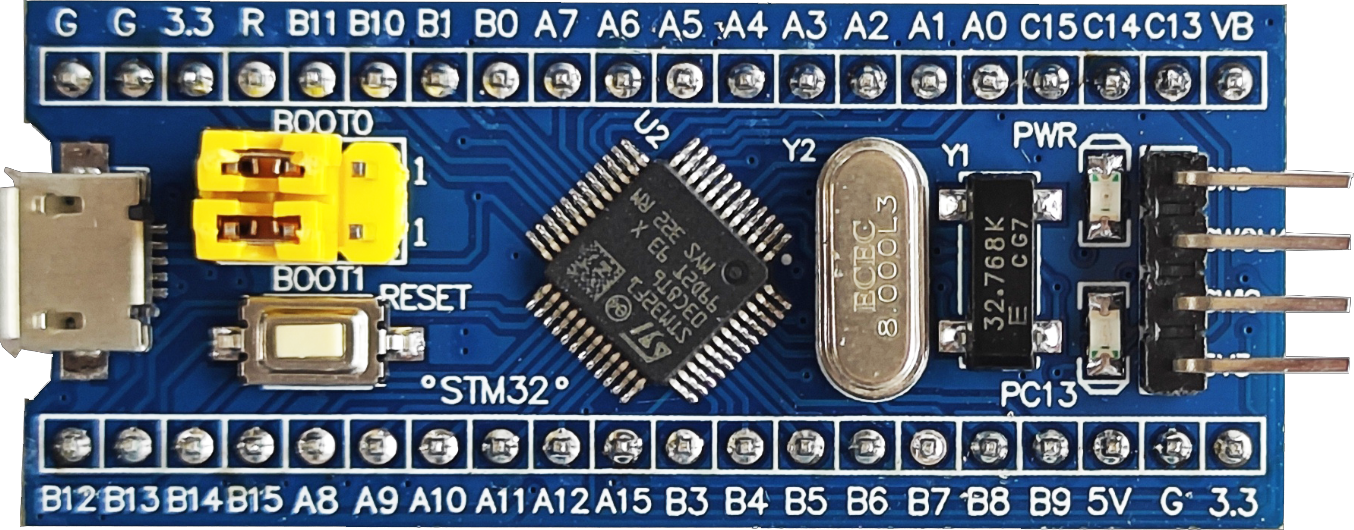
 Design with STM32F103 Blue Pill in Cirkit Designer
Design with STM32F103 Blue Pill in Cirkit DesignerIntroduction
The STM32F103 Blue Pill is a compact and affordable microcontroller development board based on the STM32F103C8T6 chip, manufactured by STM32. It features a 32-bit ARM Cortex-M3 core, 64KB of flash memory, and a wide range of I/O pins, making it a versatile choice for embedded systems and IoT projects. Its small form factor and low cost make it popular among hobbyists, students, and professionals alike.
Explore Projects Built with STM32F103 Blue Pill
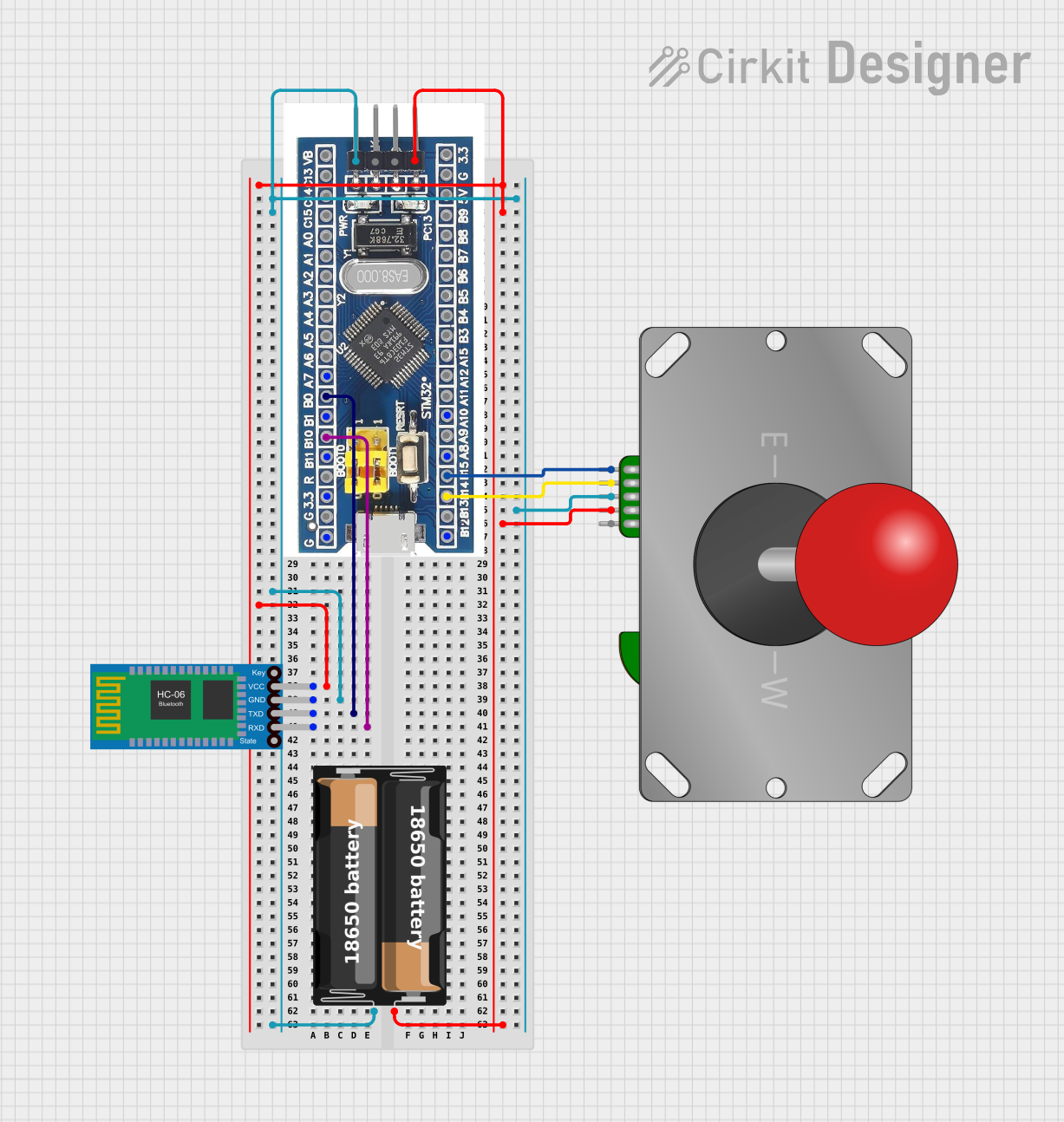
 Open Project in Cirkit Designer
Open Project in Cirkit Designer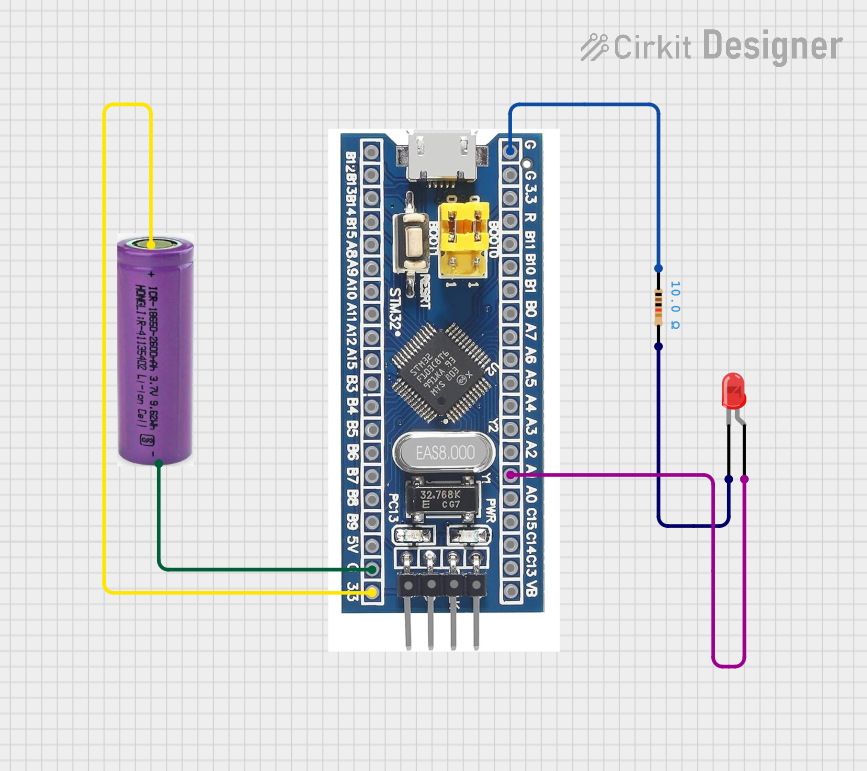
 Open Project in Cirkit Designer
Open Project in Cirkit Designer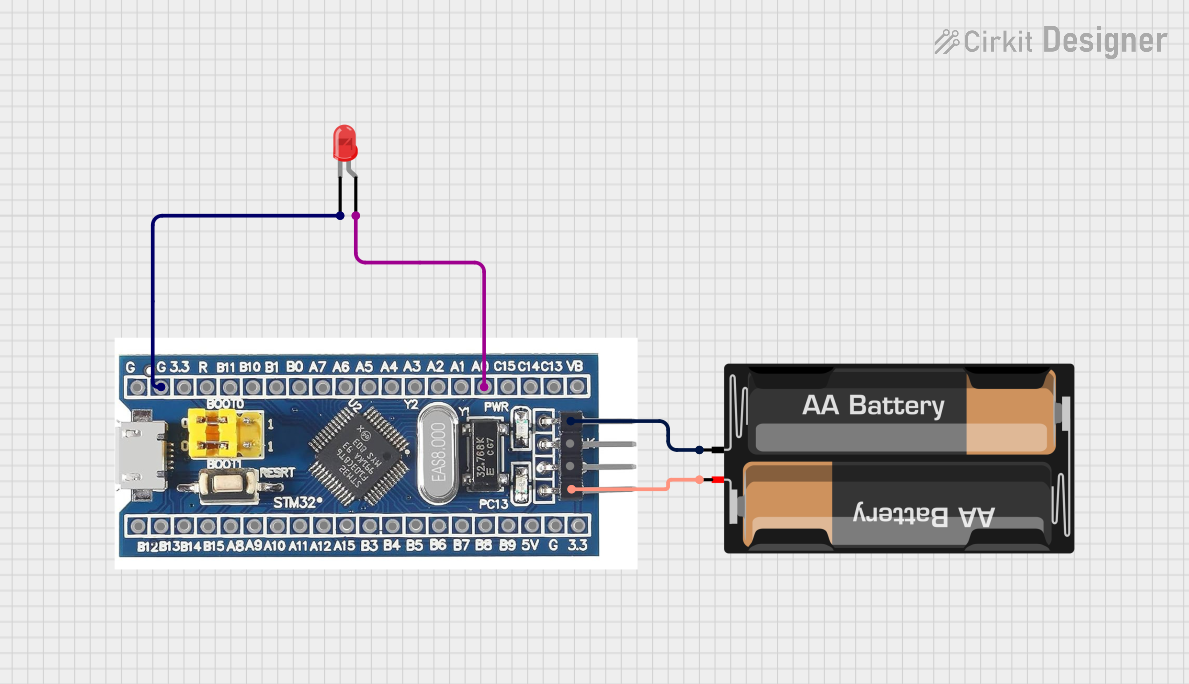
 Open Project in Cirkit Designer
Open Project in Cirkit Designer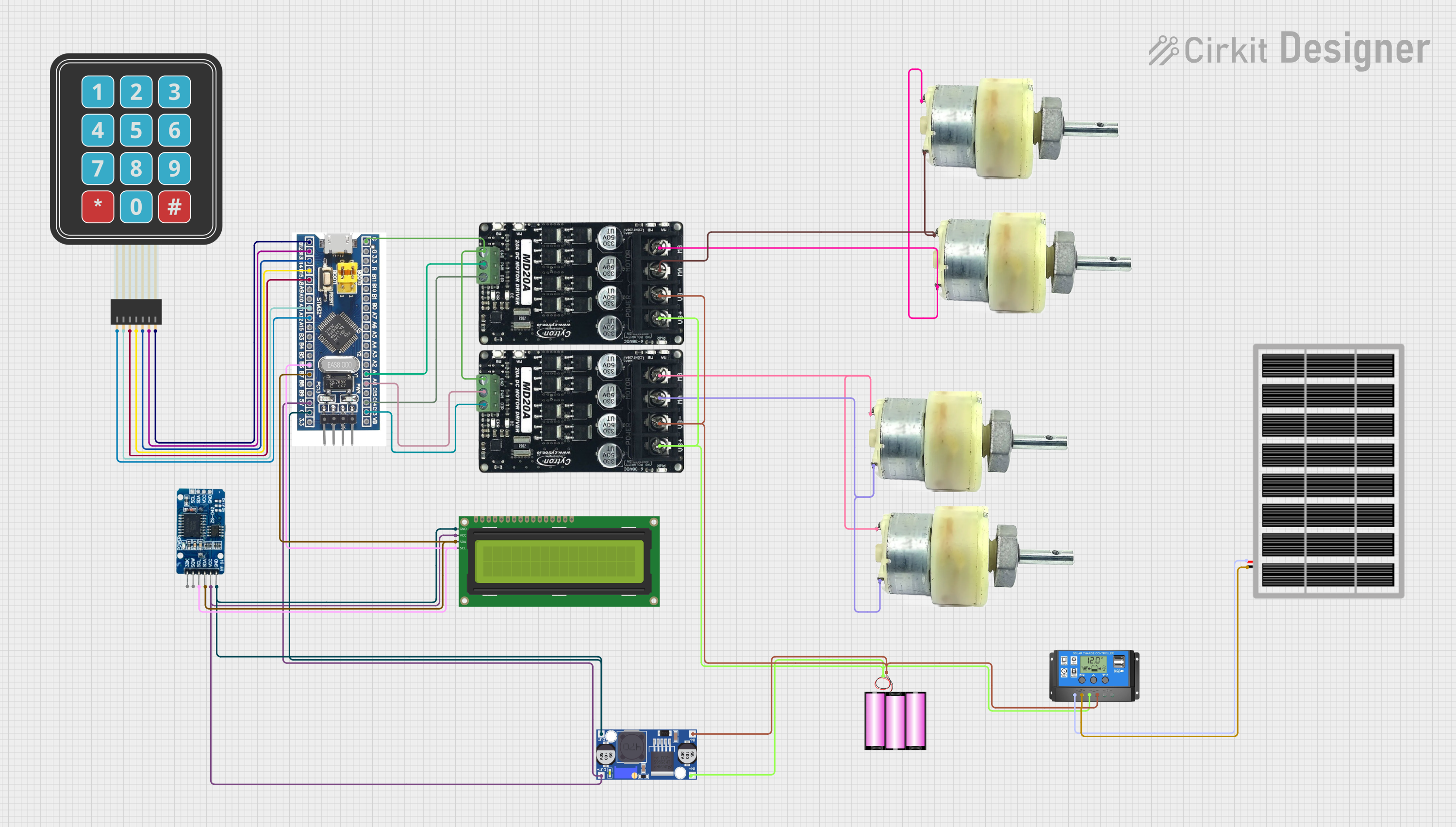
 Open Project in Cirkit Designer
Open Project in Cirkit DesignerExplore Projects Built with STM32F103 Blue Pill

 Open Project in Cirkit Designer
Open Project in Cirkit Designer
 Open Project in Cirkit Designer
Open Project in Cirkit Designer
 Open Project in Cirkit Designer
Open Project in Cirkit Designer
 Open Project in Cirkit Designer
Open Project in Cirkit DesignerCommon Applications and Use Cases
- Prototyping embedded systems
- IoT devices and smart home applications
- Robotics and motor control
- Data acquisition and sensor interfacing
- Educational projects for learning ARM Cortex-M3 architecture
Technical Specifications
The STM32F103 Blue Pill offers the following key technical details:
| Parameter | Value |
|---|---|
| Microcontroller | STM32F103C8T6 |
| Core | ARM Cortex-M3 |
| Operating Frequency | 72 MHz |
| Flash Memory | 64 KB |
| SRAM | 20 KB |
| GPIO Pins | 37 |
| Communication Interfaces | UART, SPI, I2C, CAN, USB |
| ADC Resolution | 12-bit (10 channels) |
| Operating Voltage | 3.3V |
| Input Voltage Range | 2.0V to 3.6V |
| Power Supply | 5V via USB or external source |
| Dimensions | 53 mm x 22 mm |
Pin Configuration and Descriptions
The STM32F103 Blue Pill has a total of 40 pins, including GPIO, power, and communication pins. Below is a summary of the pin configuration:
| Pin Name | Description |
|---|---|
| 3.3V | 3.3V power output |
| GND | Ground |
| A0–A7 | Analog input pins (12-bit ADC) |
| D0–D15 | Digital I/O pins |
| TX, RX | UART communication pins |
| SCL, SDA | I2C communication pins |
| USB+ / USB- | USB data pins |
| NRST | Reset pin |
| BOOT0 | Boot mode selection pin |
Usage Instructions
How to Use the STM32F103 Blue Pill in a Circuit
Powering the Board:
- Connect the board to a 5V power source via the USB port or the 5V pin.
- Ensure the power supply is stable and within the specified voltage range.
Programming the Board:
- Use an ST-Link programmer or a USB-to-serial adapter to upload code.
- Install the STM32CubeIDE or the Arduino IDE with the STM32 core for development.
Connecting Peripherals:
- Use the GPIO pins for interfacing with sensors, actuators, and other devices.
- For analog inputs, connect sensors to the A0–A7 pins.
Boot Mode Selection:
- Set the BOOT0 pin to
0for normal operation or1for programming mode.
- Set the BOOT0 pin to
Important Considerations and Best Practices
- Always use a 3.3V logic level for GPIO pins to avoid damaging the microcontroller.
- Use decoupling capacitors near the power pins to ensure stable operation.
- Avoid drawing excessive current from the 3.3V pin, as it is limited in output capacity.
- When using USB for communication, ensure proper grounding to avoid noise issues.
Example Code for Arduino IDE
Below is an example of how to blink an LED connected to pin D13 using the Arduino IDE:
// Blink an LED on pin D13 of the STM32F103 Blue Pill
// Ensure the STM32 core is installed in the Arduino IDE
void setup() {
pinMode(PC13, OUTPUT); // Set pin PC13 (D13) as an output
}
void loop() {
digitalWrite(PC13, HIGH); // Turn the LED on
delay(1000); // Wait for 1 second
digitalWrite(PC13, LOW); // Turn the LED off
delay(1000); // Wait for 1 second
}
Troubleshooting and FAQs
Common Issues and Solutions
The board is not recognized by the computer:
- Ensure the correct drivers for the ST-Link or USB-to-serial adapter are installed.
- Check the USB cable for damage or try a different cable.
Code upload fails:
- Verify that the BOOT0 pin is set to the correct position for programming mode.
- Ensure the correct COM port and board settings are selected in the IDE.
The board does not power on:
- Check the power supply voltage and connections.
- Inspect the board for any visible damage or loose components.
GPIO pins are not responding:
- Confirm that the pins are configured correctly in the code.
- Check for short circuits or incorrect wiring.
FAQs
Q: Can I use 5V logic devices with the STM32F103 Blue Pill?
A: No, the GPIO pins operate at 3.3V logic levels. Use a level shifter if interfacing with 5V devices.
Q: How do I reset the board?
A: Press the onboard reset button or toggle the NRST pin.
Q: Can I use the Arduino IDE for programming?
A: Yes, the STM32 Blue Pill is compatible with the Arduino IDE after installing the STM32 core.
Q: What is the maximum current output of the 3.3V pin?
A: The 3.3V pin can supply a maximum of approximately 100 mA. Avoid exceeding this limit.